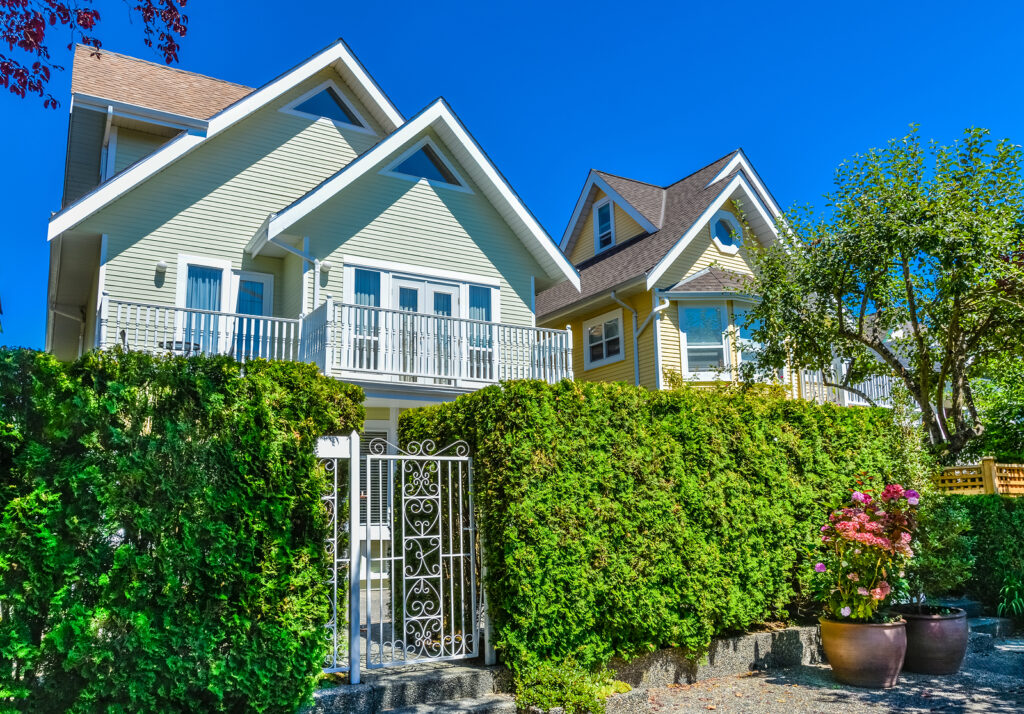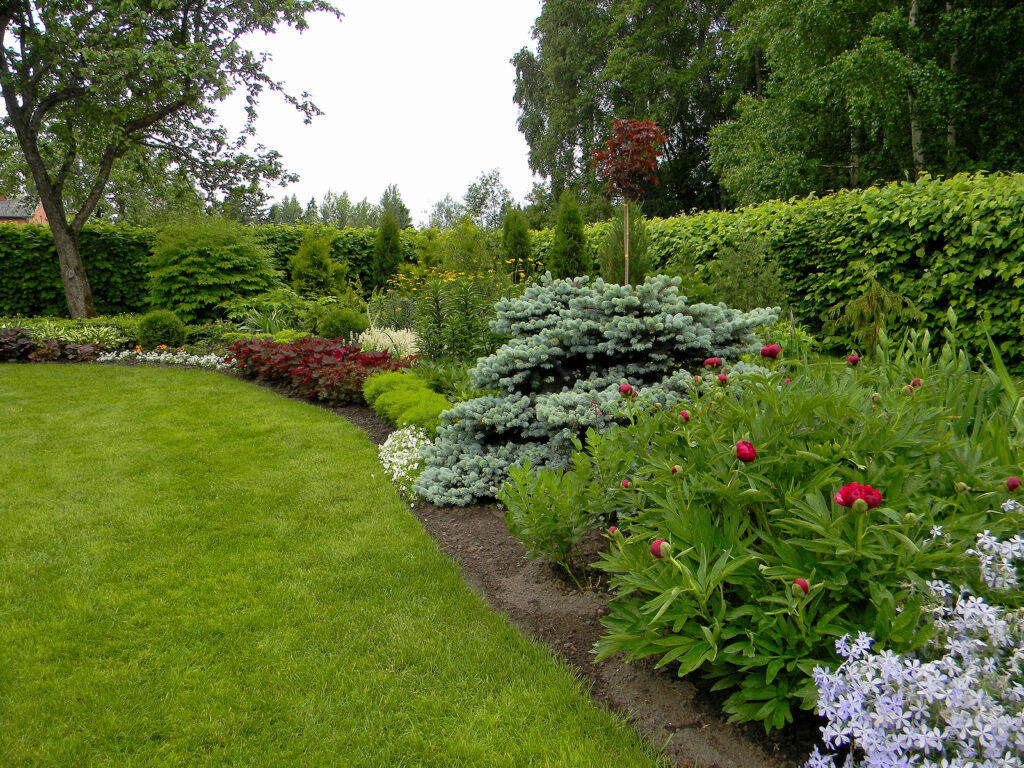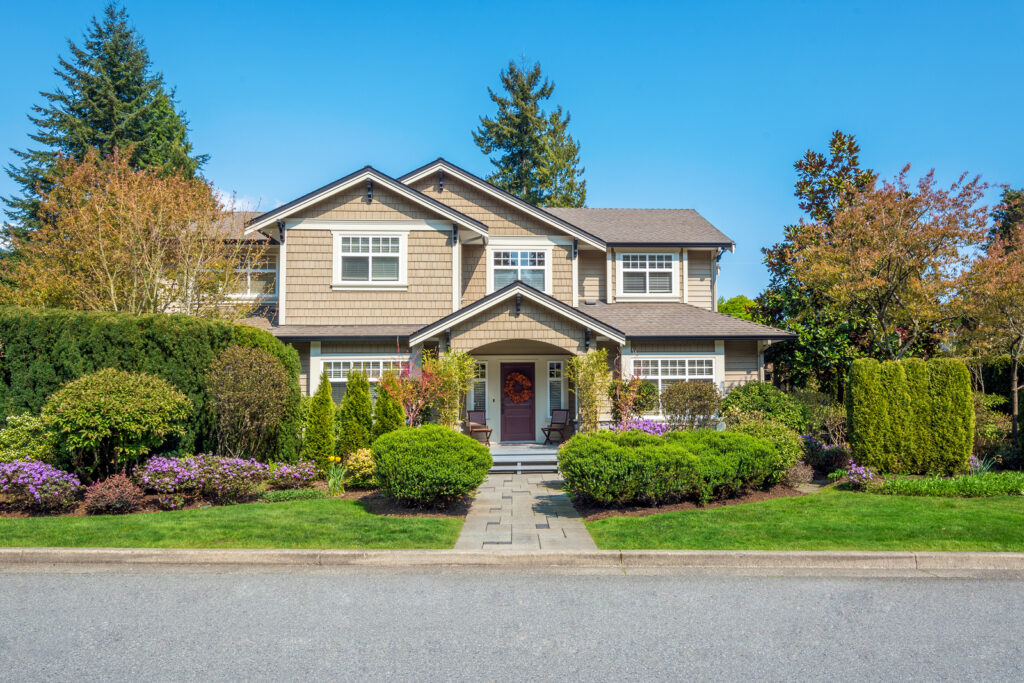Shrubs along with trees are the backbone of most garden and landscape designs. Shrubs serve different functions in the garden. They can act as walls or low borders. They can stand alone as specimens of interest.
Specimen shrubs are colorful and vibrant; sometimes they are oddly shaped. A specimen shrub is usually planted alone but sometimes with one or two equally colorful partners. Specimen shrubs command attention.
Shrubs for borders, walls, or screens—hedges–are the antithesis of specimen shrubs. Wall and border shrubs are almost always planted in groups, often in straight lines. Often their foliage blends together to create a backdrop for colorful perennials, specimen shrubs, or garden art or structures.
When selecting shrubs first decide how you intend to use them. Here are ways shrubs are used in the garden:

Foundation shrubs
Foundation shrubs are shrubs set near a house or building, near the foundation. Foundation shrubs act as a transition between the built landscape—that is a building—and the natural landscape, plants.
Foundation plants can be perennials, annuals, and trees, but foundation plants are most commonly shrubs because shrubs are long-staying in the garden (unlike annuals and perennials). As well, shrubs complement the scale of a building; trees being larger are commonly planted at a distance from the building.
Foundation shrubs help the architecture of a house or building transition to the landscape; they soften a building and ease it into the landscape.
Foundation plantings can be low matching shrubs near a front door; they can be larger shrubs at the corner of a building. A design that has a rhythm of low to medium to tall shrubs allows the eye of the garden visitor to move seamlessly from the building to the landscape.
Foundation plants can be evergreen shrubs or flowering shrubs or a mix of both. Deciduous shrubs are less commonly used as foundation plantings; they may appear stark in winter next to a building.
Characteristics of foundation shrubs
Here are a few characteristics designers often look for in foundation plantings and shrubs:
- Attractive for all seasons. Evergreens shrubs are a good choice as foundation plants.
- Pleasing shape and color.
- Neat growth habit, easy to maintain, and pleasing to the eye up close. Compact shrubs make good foundation plants; they commonly have small leaves and a mounded form. (Foundation shrubs can be pruned to rectangular or box shapes or they can be unregimented and informal.)
- Complement other plantings in the garden. They match or compliment nearby plantings in terms of texture, color, and shape.

Hedge and screen shrubs
Shrubs can be used as hedges or screens to create a framework or wall. Hedge and screen shrubs can be used to set parts of the garden apart.
A hedge can screen a property from a roadway or unwanted view. Hedges can create rooms within a large garden or landscape. Hedges can also serve as a backdrop for garden features such as sculpture or a colorful perennial border.
Shrubs can be used as a screen to block out unwanted views. Screen hedges can separate a building or garden from a busy street or from neighboring properties.
Sometimes a hedge or shrub screen can anchor a building or house in the landscape and extend the built architecture into the garden.
A tall hedge 8 to 10 feet high or more can enclose a space and make a garden room. A medium-size hedge, 4 or 5 feet tall, can create a boundary without blocking the view. A small hedge, 1 to 3 feet tall, can create an edge and serve as a directional guide along walkways or drives.
Hedge and screen plants are commonly planted in groups, usually straight lines or formal curves. A single plant species is often used to create a hedge or screen.
Plants often used for hedges or screen are yew, holly, hornbeam, rhus, bay laurel, cypress, ligustrum, photinia, pittosporum, thuja, spruce, lavender, myrtle, escallonia, raphiolepis, and boxwood. Most of these have green foliage; some bloom but the flowers are secondary to dense foliage.

Shrub borders
Flowering shrubs can be utilized in borders—flowering shrub borders or mixed borders that include perennials, annuals, and flowering shrubs.
A flowering shrub is larger than a perennial flower and requires less maintenance. Perennial flowers usually need regular deadheading to encourage new blooms. Flowering shrubs are not deadheaded apart from a shearing once or twice a year.
A shrub border can provide year-round interest, attract wildlife, and supply cut lowers. Flowering shrubs planted under large trees form interesting understory plantings and can accent the garden.
Green or solid colored foliage shrubs can be used as solid walls that provide privacy. Green-leaved shrubs or a combination of green and colored foliage along with various textures adds variety and is a perfect backdrop for perennials, bulbs, and ground covers.
For contrast, place one, two, or three flowering shrubs in front of a leafy border to create a focal point in an otherwise serene composition.

Hedge and border shrubs, foundation and flowering shrubs–all in one design
Questions to ask when selecting shrubs
Once you know the function of shrubs in your garden—once you’ve settled on a design, you can choose from shrubs that have the right height and spread and the right color and texture.
Here are a few questions to answer as you select shrubs:
- What is the mature size, height, and spread, of the shrub? Will it fit both lengthwise and vertically? Avoid shrubs that will quickly outgrow their allocated space.
- Does the shrub grow well in sun, shade, or some of both?
- What kind of soil does the shrub need? Will it grow in your garden? Some shrubs do well in neutral to alkaline soil, others need acidic soil.
- What are the shrub’s water needs? Some shrubs need even moisture, some prefer dry soil, some prefer wet soil.
- Can the shrub grow in your climate? Can it survive in the average low or average high temperatures where you live?
- Is the shrub evergreen or deciduous? What does it look like in winter? If it loses its leaves what is its form without leaves? Does it have colorful bark?
- Does the shrub flower or have berries? What color are the flowers or berries?
- Is the shrub fragrant? Does it have a pleasing fragrance or an odor that some might not like?
- Does the shrub attract birds or butterflies?
- Does the shrub attract deer or rabbits? Will fencing be required to protect it?
Also of interest:
Designing with Flowering Shrubs















